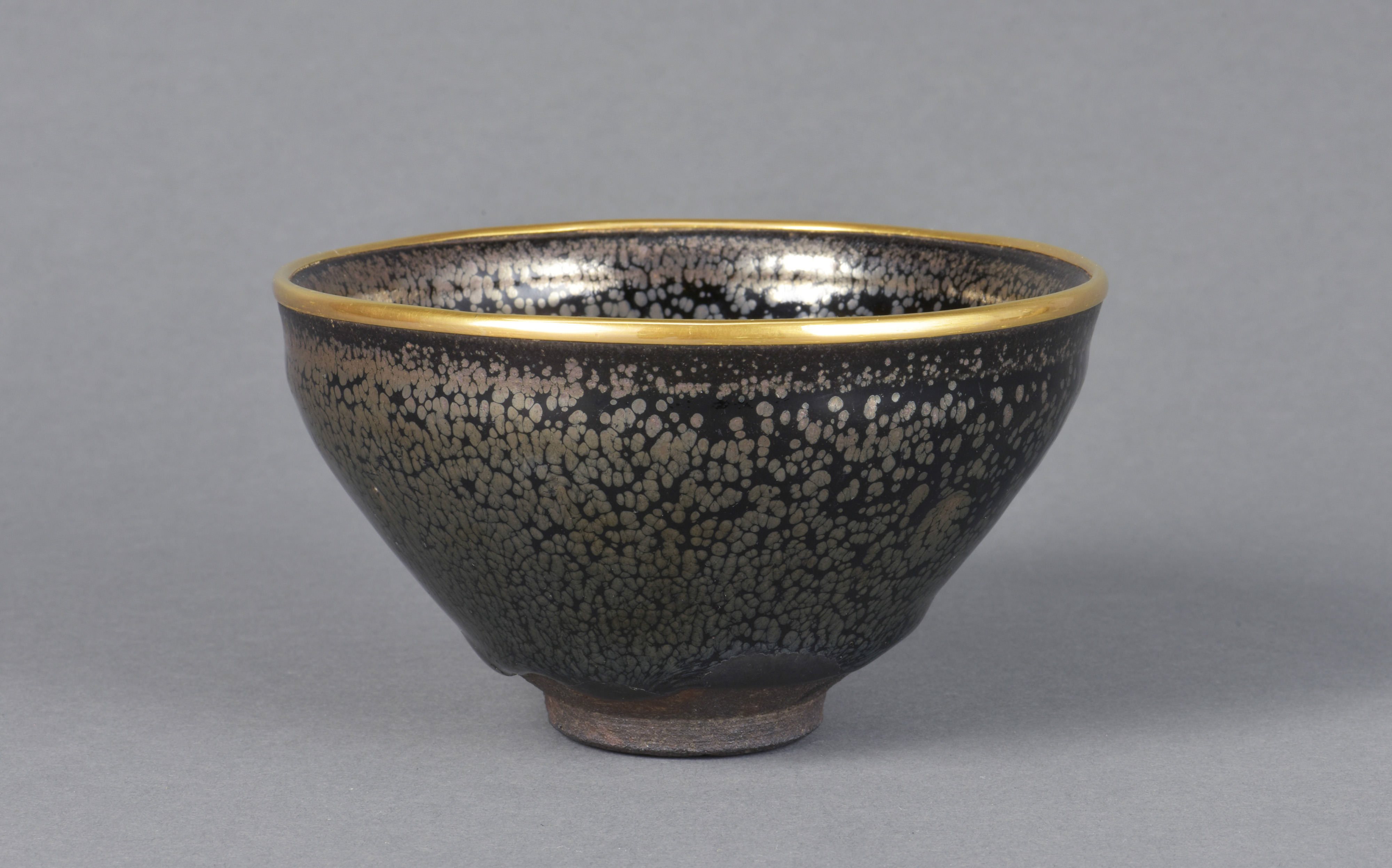Abstract
Figure 1 Tea bowl with silvery-spotted tenmoku glaze, Jian ware, Southern Song dynasty, twelfth to thirteenth century. Museum of Oriental Ceramics, Osaka; gift of the Sumitomo Group (The Ataka Collection).
Tea bowl with silvery-spotted tenmoku glaze, Jian ware, Southern Song dynasty, twelfth to thirteenth century. Museum of Oriental Ceramics, Osaka; gift of the Sumitomo Group (The Ataka Collection).
Jeffrey Moser highlights a development of modern porcelain at the industrial-scale kilns of Jingdezhen in medieval China that was predicated on systematic elimination of chance from the firing process. Jingdezhen porcelain relied upon the continuity of human agency throughout the firing process to achieve its hallmark aesthetic fine-lined designs under clear glazes on pure, white bodies. To that consolidating episteme of predictive manufacturing, uncontrolled effects—starbursts of ruptured minerals, pendulous gobs of molten glaze, sparking lines of crazed glass—came to be understood under the capacious rubric of yaobian (kiln transformations). Although scantly recorded in the textual record, the material products of this older mindset survive in abundance in the “oil spots” and “hare’s fur” of Jian ware tea bowls, the azure “worm tracks” of Jun ware planters, and the crackles of Guan ware celadons. Moser argues for the value of “liquid intelligence” as an analytical mechanism by which to develop a vocabulary sufficient to represent the complex processes of stimulating serendipity that generated these wares.



